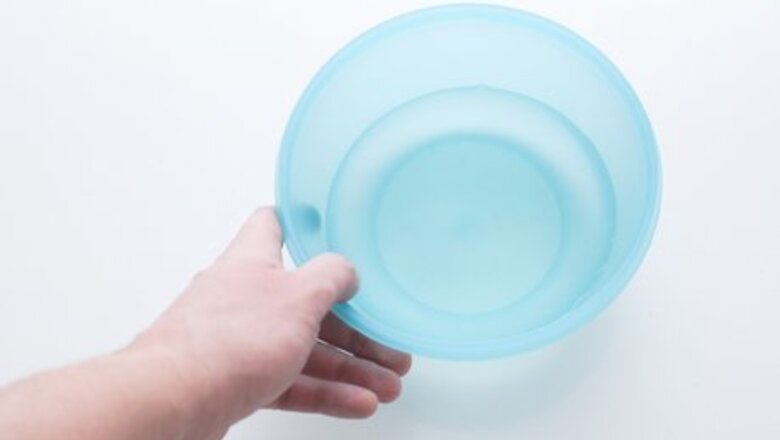
views
Hydro-cooling for Short-Term Storage
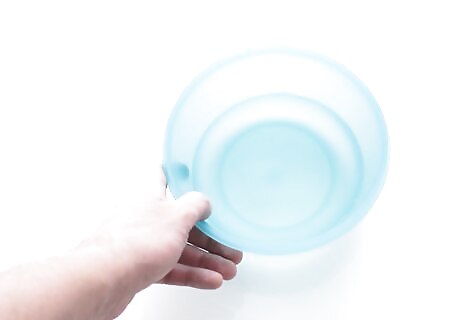
Fill a large bowl with 1–2 inches (2.5–5.1 cm) of water. Choose a large bowl or pan and fill it with 1–2 inches (2.5–5.1 cm) of cool water. You’ll want to choose something large enough to hold all of your radishes, but it doesn’t need to be incredibly deep.
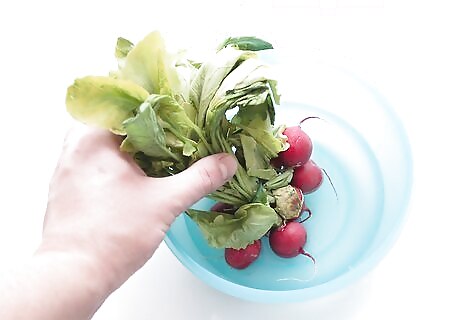
Place the radishes in the water for up to 3 days. Spread out the radishes in the water so that it looks as if they’re growing out of it. The radishes should be whole — no need to trim the ends. Each radish should be partly submerged in the water with the roots at the bottom, and they should be placed evenly. This is a short-term storage option since you'll be keeping them at room temperature, so the radishes will only last a couple of days.
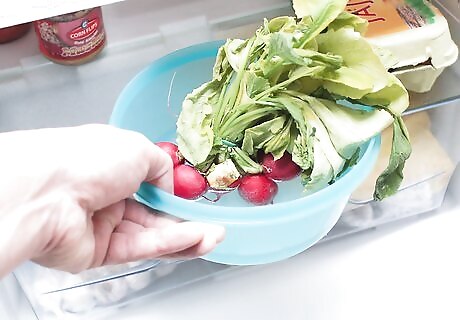
Put the bowl in the refrigerator for 5-8 days. If you’d like your radishes to stay fresh in the bowl for a little bit longer, place the bowl in the fridge. This will help delay wilting, and the radishes should last 5-8 days in the fridge. If the leaves of the radishes are turning brown or becoming limp, they're going bad.
Putting Radishes in a Plastic Bag
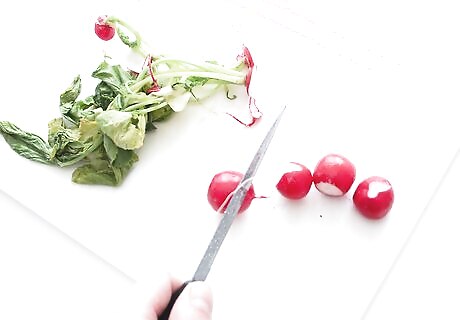
Cut the leafy tops and roots off of the radishes. Remove the greens and roots from each radish using a knife or scissors. If you don’t remove these parts, the leafy top will draw water from the root and the radish will dry out. It’s fine to wash the radishes, but they might not last as long as unwashed radishes. Excess moisture causes vegetables to go bad faster, meaning your washed radishes might expire several days or a week before your unwashed ones.
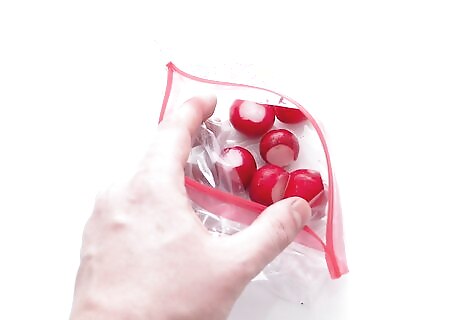
Place the radishes in a plastic bag layered in dampened paper towels. Open a resealable plastic bag and place the first damp paper towel at the bottom. Place a first layer of unstacked radishes on the damp paper towel, and then cover the layer with another damp paper towel. Repeat this process with the rest of the radishes. Make sure you end with a damp paper towel on top. If you don’t have paper towels, you can use a clean cloth or tissue instead. Since you cut the roots off, it's important to keep the radishes damp so that they retain their fresh quality.
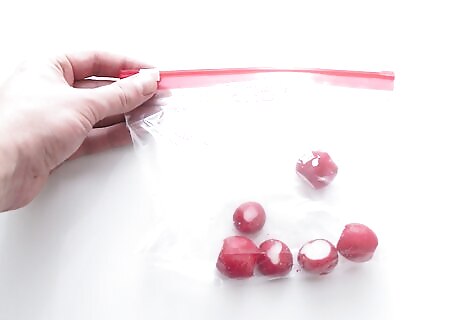
Seal the bag and remove excess air. After all of the radishes have been placed in the bag, remove all of the extra air. You can do this either by flattening the top of the bag or by using a straw to suck out the air. Seal the bag carefully so that nothing will get into the radishes.
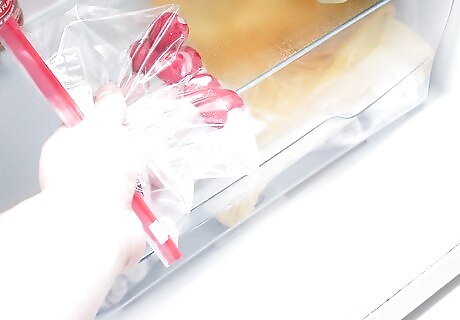
Store the bag of radishes in the refrigerator for 1-2 weeks. Place the plastic bag of radishes in the refrigerator in a cool, dark spot such as the crisper compartment. When placed in the fridge, the radishes should last for several weeks. Check for wilting to see if your radishes are going bad. If they're mushy instead of hard, they probably aren't fresh anymore.
Placing Radishes in a Canning Jar
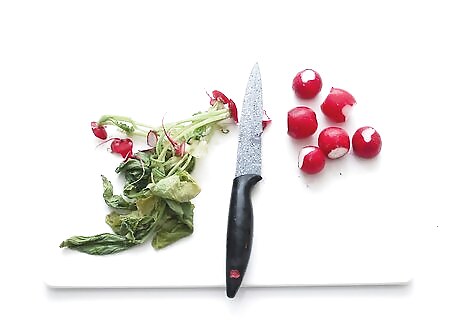
Wash the radishes and trim their roots and tops. Wash your radishes with clean water to remove all of the dirt. Using scissors or a knife, cut off the skinny roots and leafy tops of the radishes. It's fine to wash the radishes because you're removing their roots.
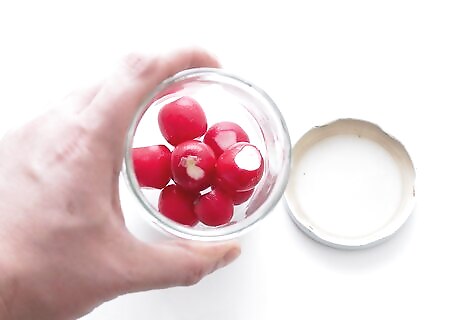
Put the radishes in a canning jar. Use a canning jar or similar container to hold the radishes, making sure the container is large enough to hold all of them. Place the radishes in the jar or container, layering them on top of one another.
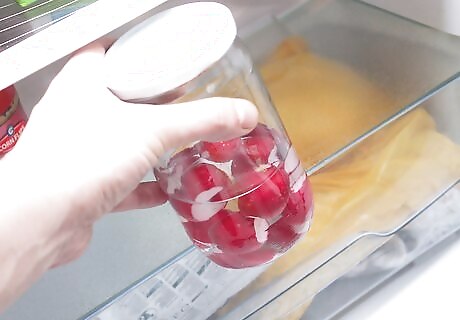
Fill the jar with water and place it in the refrigerator for up to 8 days. After all of the trimmed radishes are in the jar, fill it up with clean water. Put the lid on the jar or container, making sure that it’s properly sealed. Place the jar in the fridge. The radishes should stay crisp for up to 8 days. Check to see if the radishes still have a tough exterior and aren't squishy after several days. You want them to still have a crunch, meaning that they're fresh.
Storing Radishes in a Basement or Cellar
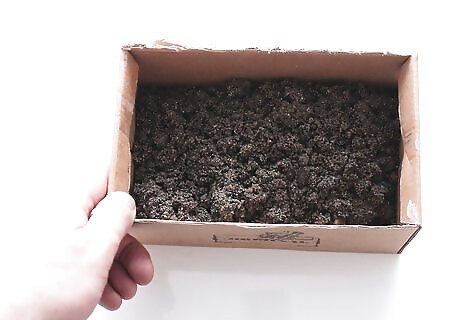
Fill a box with damp sand and place it in your basement or cellar. If you have a basement or cellar that stays a bit chilly, you can store your radishes down there. Find a box that will fit the radishes and fill it with an even layer of damp sand. To dampen the sand, spray it with water using a hose, spray bottle, or similar tool. The sand should be damp, not soaked. If you're finding it hard to move the sand around with your fingers and it feels very clumpy, it's too wet.
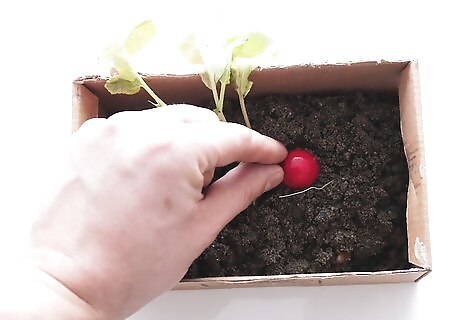
Place unwashed radishes in the box of sand. Spread the radishes out between layers of sand. Make sure none of the roots are touching each other to prevent rot from spreading. It's also important that the sand stays damp to ensure fresh radishes. There's no need to wash the radishes before placing them in the sand. Unwashed vegetables last longer than washed ones, and the damp sand will give the radishes all the moisture they need. Plus, you'll have to wash the radishes once you remove them from the sand.
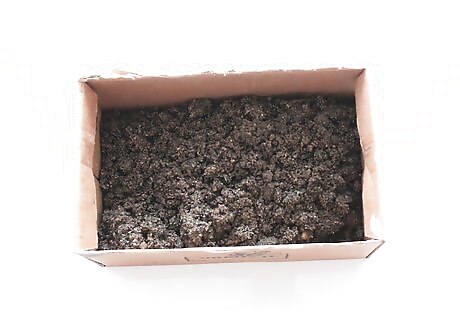
Store the radishes in the sand for up to 3 months. Radishes submerged in the damp sand should stay fresh for up to 3 months. To make sure you remember when you put them in the sand, tape a note to the box with the date of when you placed them in the basement or cellar.
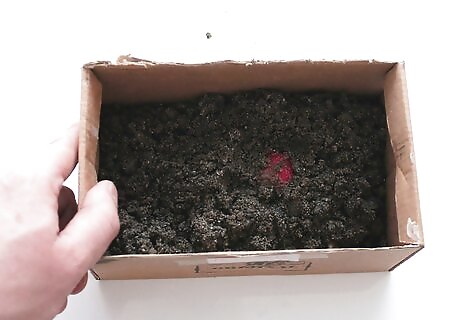
Check the radishes for rotting once a week. Roughly once a week, look at your radishes to make sure none of them are rotting or molding. If you find one that's gone bad, remove it from the sand so that the mold or rot doesn't spread. Each week, make sure the sand is still damp by doing a touch test. If it needs to be dampened again, use the hose or spray bottle to spray it with water.



















Comments
0 comment